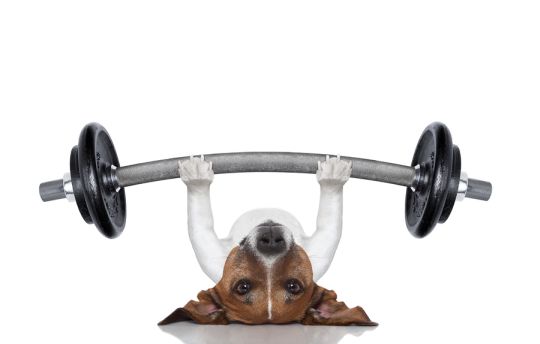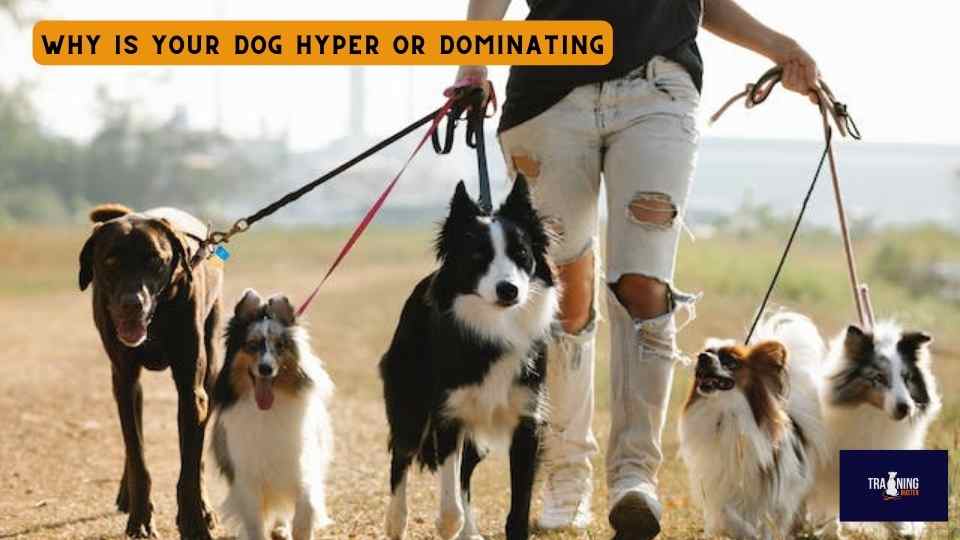
Dogs are known for their unique personalities and behaviors. Contrary to popular belief, though, these behaviors are not solely determined by breed characteristics.
We will explore the factors contributing to a dog’s hyper or dominant tendencies. You’ll gain insights into addressing these behaviors effectively and creating a harmonious relationship with your canine companion.
1. Genetics and Breeds
While breed characteristics can influence a dog’s temperament, it’s essential to recognize that genetics alone do not determine hyperactivity or dominance.
Breeds often associated with high energy levels or assertiveness may exhibit these traits more prominently, but individual variation and environmental factors also play a significant role.
2. Mental and Physical Stimulation
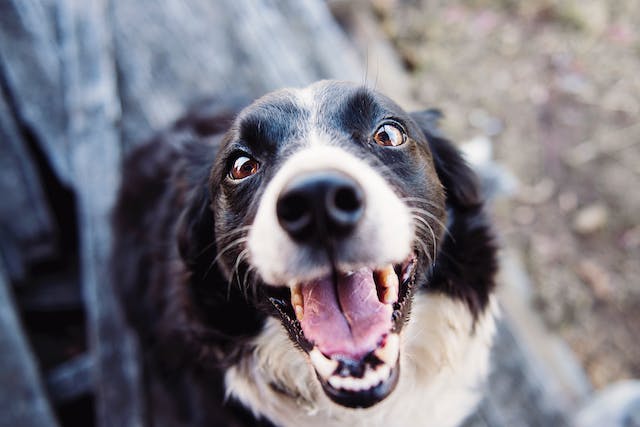
Reduced mental and physical stimulation can lead to excessive energy and hyperactivity in dogs.
Regardless of breed, dogs require regular exercise, playtime, and mental challenges to channel their energy appropriately. Insufficient stimulation can result in restlessness, destructiveness, and a need for attention-seeking behaviors.
3. Inadequate Training and Socialization
Proper training and socialization are essential for dogs to learn appropriate behavior and develop self-control.
Dogs lacking in training or socialization may exhibit dominant tendencies to assert themselves or feel secure in unfamiliar situations.
Consistent, positive reinforcement-based training methods and exposure to various environments can help address these issues.
4. Anxiety and Stress

Anxiety and stress can manifest in hyper or dominant behavior in dogs. Anxiety-related behaviors, such as excessive barking, pacing, or destructive chewing, may stem from separation anxiety, fear, or past traumatic experiences.
Identifying the underlying causes of anxiety and implementing strategies to reduce stress can help mitigate these behaviors.
5. Health Issues and Medical Conditions
Sometimes, underlying health issues or medical conditions can contribute to a dog’s hyperactivity or dominant behavior.
Pain, discomfort, hormonal imbalances, or neurological disorders can impact a dog’s behavior and energy levels.
When addressing these behaviours, consulting with a veterinarian to rule out any underlying health issues is crucial.
6. Environmental Factors
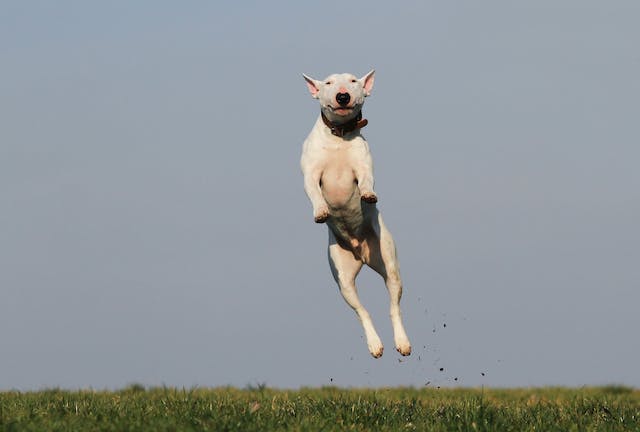
Environmental factors, such as a chaotic household, inconsistent routines, or exposure to high-stress situations, can influence a dog’s behavior.
Dogs are sensitive to their surroundings, and an unstable environment can lead to heightened hyperactivity or dominance.
Creating a calm, structured environment with consistent routines can help address these behavioral challenges.
7. Positive Reinforcement and Behavior Modification
Addressing hyperactivity or dominant behaviors requires a proactive and positive approach.
Using positive reinforcement techniques, such as rewards and praise, can reinforce desired behaviors and discourage unwanted ones.
Additionally, behavior modification techniques, such as redirecting attention, setting boundaries, and providing mental stimulation, can help reshape your dog’s behavior.
8. Seeking Professional Help
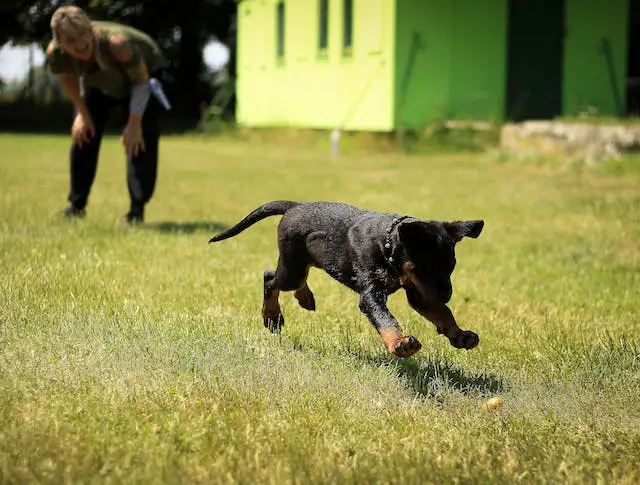
If you’re struggling to manage your dog’s hyper or dominant behavior, We recommend seeking professional help from a certified dog trainer or behaviorist.
These professionals can provide personalized guidance, develop a behavior modification plan, and help address any underlying issues that contribute to your dog’s behavior.
9. Patience, Consistency, and Love
Addressing hyperactivity or dominance in dogs requires patience, consistency, and a lot of love.
Remember, behavior change takes time, and every dog is unique. By approaching the process with understanding and kindness, you can create a strong bond with your dog while helping them become a well-adjusted and happy member of your family.
10. The Importance of Bonding and Building Trust
Building a strong bond with your dog is paramount when addressing hyperactivity or dominant behavior.
Dogs thrive on trust and positive interactions with their owners. Take the time to engage in activities that strengthen your bond, such as daily walks, interactive play sessions, and gentle grooming.
Establishing a foundation of trust and creating a secure attachment will make your dog feel more relaxed and confident, reducing the likelihood of hyper or dominant behavior.
11. Consistency in Routine and Rules
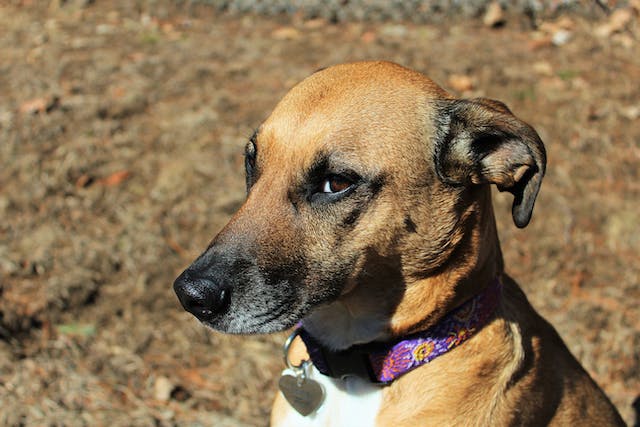
Consistency is key when addressing behavioral issues in dogs. Establishing a consistent routine and clear rules helps provide structure and stability.
Dogs thrive on predictability, so having a regular feeding schedule, designated exercise times and consistent training sessions can help them feel more secure and reduce hyperactivity or dominant tendencies.
Make sure all family members are on the same page and enforce the rules consistently to avoid confusion.
12. Managing their Energy Levels
Properly managing your dog’s energy levels is crucial to prevent excessive hyperactivity or dominant behavior.
Regular exercisings, such as brisk walks, jogging, or interactive play sessions, can help release pent-up energy and provide mental stimulation.
Engaging in activities that challenge their minds, such as puzzle toys or obedience training, can also help redirect their focus and provide a healthy outlet for their energy.
13. Providing a Safe and Enriched Environment

Creating a safe and enriched environment for your dog is essential in curbing hyper or dominant behavior. Ensure your dog has a comfortable and quiet space to retreat when it needs downtime.
Provide appropriate chew toys, puzzle toys, and interactive feeders to keep them mentally engaged and prevent destructive behavior out of boredom.
Consider creating a positive association with their crate or designated space as a place of relaxation and security.
14. Seeking Professional Guidance
In some cases, addressing hyperactivity or dominant behavior may require the assistance of a professional dog trainer or behaviorist.
These experts can assess your dog’s specific needs, tailor a training plan, and provide guidance on behavior modification techniques.
They can also help you understand the underlying causes of your dog’s behavior and offer valuable insights and strategies to manage and improve their behavior effectively.
15. Celebrating Progress and Celebrating Your Dog
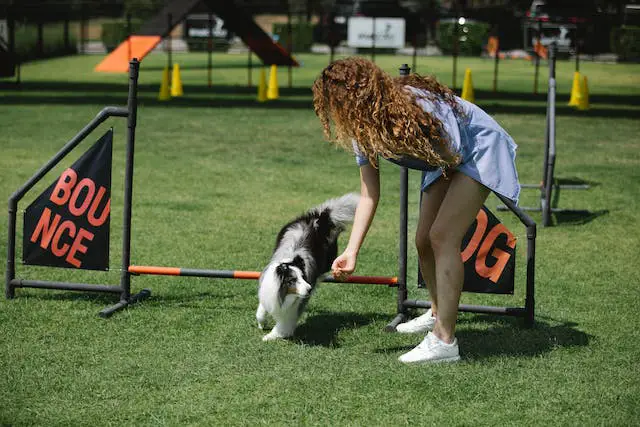
Remember to celebrate every step of progress along the way. Behavior change takes time and patience, so acknowledge and reward your dog’s efforts and improvements.
Celebrate the small victories, whether a successfully executed command, a calmer reaction to a trigger, or a moment of relaxed behavior.
Positive reinforcement and encouragement go a long way in reinforcing desirable behavior and building a strong, loving bond with your dog.
Understanding the multifaceted factors involved is crucial when addressing hyperactivity or dominance in dogs.
By considering their breed, environment, training, health, and individual characteristics, you can effectively develop a comprehensive approach to address these behaviors.
You can guide your dog towards a balanced and well-behaved state through consistency, positive reinforcement, professional guidance when needed, and a commitment to building trust and a strong bond.
Remember, every dog is unique, and with patience, love, and dedication, you can help your dog thrive and enjoy a happy and harmonious life together.


